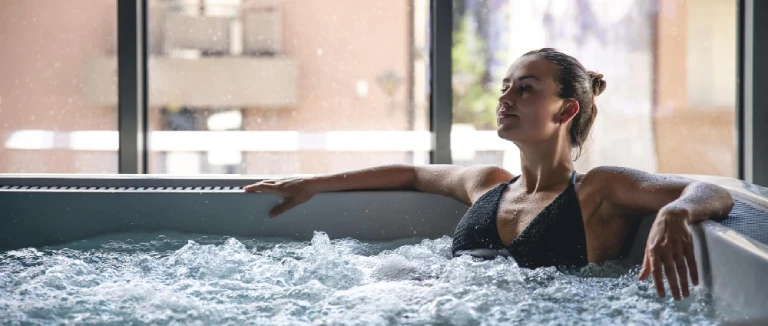
In recent years, ice baths have become increasingly popular to promote recovery and overall well-being. However, immersing oneself in freezing-cold water may seem extreme to some. In this article, we will delve into the world of ice baths, understanding what they are and why people willingly expose themselves to such icy temperatures. We'll explore the scientific basis of ice baths and the diverse advantages they offer for physical recovery and mental wellness. So, let's dive into the cold waters of knowledge to uncover the truth behind this chilly practice.
Whether you're an athlete looking to enhance your performance or someone seeking to optimize your overall well-being, ice baths may be the key to unlocking your full potential.
What Do Ice Baths Do?
Ice baths, called cold water immersion, entail submerging oneself in a tub or pool containing cold water. The low temperature initiates a series of physiological responses within the body. Upon exposure to cold water, blood vessels constrict, causing a reduction in blood flow to the skin's surface and directing it toward essential organs. This process, scientifically termed vasoconstriction, preserves heat and maintains the body's core temperature. Cold water triggers the release of endorphins, natural painkillers, and mood boosters. This can result in a sense of euphoria and improved mental well-being. The cold temperature can also reduce inflammation and swelling, making ice baths an effective recovery tool for athletes and individuals recovering from intense physical activities or injuries.
Take your fitness and recovery to the next level! You can discover cutting-edge treatments at Liv Hospital in Turkey and embark on your journey to a healthier, stronger you.

Are Ice Baths Good For You?
Why do athletes take ice baths? They extensively employ this strategy due to its potential in improving physical recovery. The frigid temperature of ice baths contributes to alleviating inflammation and muscle soreness through the constriction of blood vessels and the suppression of inflammatory molecules. This beneficial effect aids in repairing the micro-tears in muscle fibers caused by intense physical activity, leading to faster recovery and reduced downtime between workout sessions.
Ice baths also have a positive impact on circulation. As one immerses themselves in cold water, blood vessels constrict; upon exiting the ice bath, they dilate, resulting in an augmented blood flow. This improved circulation facilitates the delivery of oxygen and nutrients to the muscles, thereby promoting their repair and recovery.
You can trust Liv Hospital, a leading medical center in Istanbul, for expert fitness and recovery treatment. Our experienced professionals are dedicated to helping you perform at your best.
What Are Ice Baths Good For?
Beyond physical recovery, ice baths can have a powerful effect on mental well-being. Exposure to cold water stimulates the release of endorphins, which naturally boost mood and help reduce stress and anxiety. Many people report that regular ice baths leave them feeling more energized, focused, and mentally resilient.
Are Ice Baths Dangerous?
Although ice baths can appear intimidating, they are generally safe when done properly. It's important to address some common myths and misconceptions. For example, many believe ice baths significantly increase the risk of hypothermia. In truth, when ice baths are kept brief, they do not cause a dangerous drop in core body temperature. Plus, the release of endorphins during an ice bath can actually help you feel warmer and more comfortable.
Another common misconception is that ice baths can prevent muscle growth and adaptation. While cold water immersion may temporarily reduce inflammation after exercise, there is no evidence that it negatively affects long-term muscle development or adaptation.
Discover a new level of wellness at Liv Hospital's state-of-the-art facilities in Istanbul. Experience personalized fitness and recovery treatments designed to help you reach your full potential.

How to properly take an ice bath
To take an effective ice bath, fill a tub or pool with cold water, keeping the temperature between 50 and 59 degrees Fahrenheit (10 to 15 degrees Celsius). Allow your body to adjust by starting with your legs, then slowly immerse yourself further up. Once you're fully in, focus on slow, steady breathing and try to relax”initial discomfort is normal but usually fades with practice. Aim to stay in the ice bath for 10 to 15 minutes, adjusting the duration based on your comfort and experience. Afterward, exit the bath slowly and dry off with a warm towel to prevent a sudden drop in body temperature.
How long should you stay in an ice bath?
How long you stay in an ice bath should depend on your personal comfort and goals. Generally, 10 to 15 minutes is recommended. If you're new to ice baths or have a lower tolerance to cold, start with shorter sessions of 5 to 7 minutes, gradually increasing your time as you become more accustomed. Always pay attention to how your body feels”if you notice discomfort or numbness, get out right away. Never push through extreme discomfort or persistent numbness; your safety comes first.
How often should you take ice baths?
How often you should take ice baths depends on your individual needs and activity level. For athletes in intense training, taking an ice bath after each session may help speed up recovery and reduce muscle soreness. For those with less frequent or lower-intensity activity, one or two ice baths per week can still provide noticeable benefits. Keep in mind that while ice baths support recovery, overdoing them may lessen their effectiveness or even cause unwanted effects, so always listen to your body.
How Cold Should An Ice Bath Be?
For optimal results, ice baths are typically recommended at temperatures between 50 and 59 degrees Fahrenheit (10 to 15 degrees Celsius). This range is cold enough to activate key physiological responses like vasoconstriction and endorphin release, yet warm enough to minimize the risk of hypothermia.
What Are The Benefits Of Ice Baths?
Alongside supporting physical recovery and mental well-being, ice baths offer other valuable benefits. Cold water immersion has been shown to boost immune function by increasing the production of white blood cells, which help protect against infections and illnesses. Additionally, regular ice baths may improve sleep quality, making them a helpful addition to your overall wellness routine.
Liv Hospitals- Ice Baths For Your Wellness Routine
Ice baths provide a range of benefits for both physical recovery and mental well-being. They help reduce inflammation and muscle pain, boost mood, and may even improve sleep quality, making the cold plunge a valuable part of your wellness routine. Always start gradually, listen to your body, and consult a medical professional with any concerns. For expert guidance and support on your fitness and recovery journey, visit Liv Hospital and let their team help you experience the revitalizing effects of ice baths.
* Liv Hospital Editorial Board has contributed to the publication of this content .
* Contents of this page is for informational purposes only. Please consult your doctor for diagnosis and treatment. The content of this page does not include information on medicinal health care at Liv Hospital .
For more information about our academic and training initiatives, visit Liv Hospital Academy
